V/H/S/85 (2023)
Experience harrowing tales of found-footage horror that pull you into the 1980s...
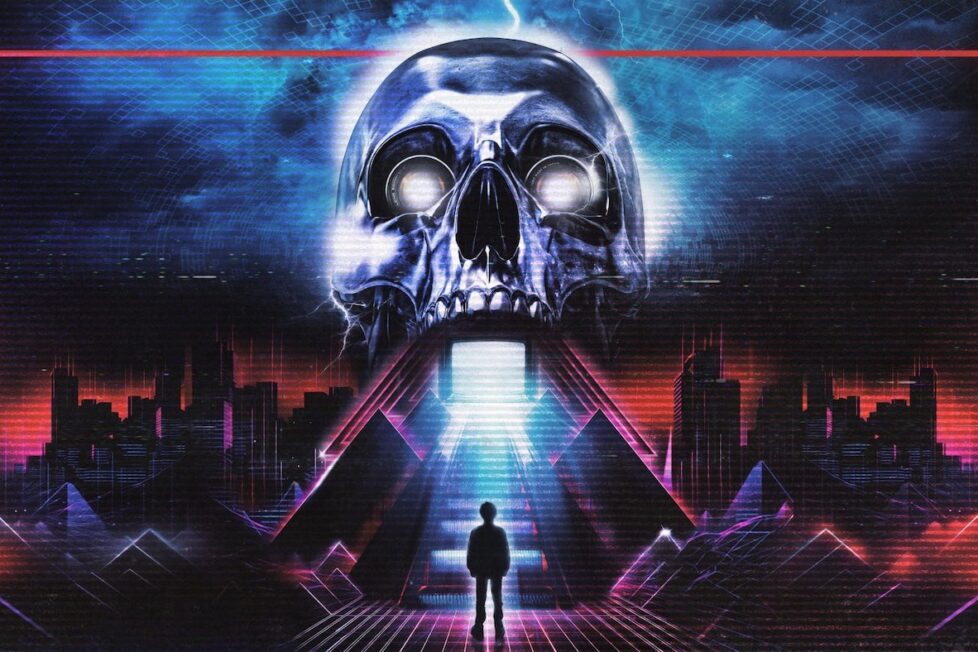
Experience harrowing tales of found-footage horror that pull you into the 1980s...


A found-footage horror movie is difficult to pull off. There are several obstacles that need to be overcome in order to be scary. Firstly, we expect a premise that inherently requires someone to always be holding a video camera, so audiences aren’t distracted wondering why the protagonist didn’t ditch their camera and run. Secondly, many traditional filmmaking techniques (such as shot-reverse-shot) are less feasible, so creativity is required to create a sense of space. Finally, it’s difficult to elicit a feeling of dread when we’re tethered to one character’s perspective, as tension is usually created by conveying something the protagonist is unaware of. Alfred Hitchcock’s famous ‘bomb under the table’ analogy for creating suspense doesn’t work in a found-footage movie, for instance.
Despite the potential pitfalls, some filmmakers had success employing a found-footage format. However, the best films are those where the form makes perfect sense for the story. Just like any stylistic choice, creative decisions should always augment and never distract or irritate. This is particularly the case with found-footage, where opting to tell a story using a hand-held camera had better be the right choice, or you’ll have a disconnected audience grumbling they could’ve made the same thing with their iPhone.
Few films have capitalised on the found-footage style intelligently. The bad additions to this sub-genre vastly outnumber the good ones. Indeed, the only such movie I can say truly spooked me was The Blair Witch Project (1999). Since then, there have only been a few successful outings, like the unsettling Paranormal Activity (2007) and the genuinely frightening [REC] (2007).
Unfortunately for V/H/S/85, the latest sequel in what’s become a popular franchise from Bloody Disgusting and Studio71, the film doesn’t justify the found-footage format as a chilling delivery mechanism. This anthology is ultimately less than the sum of its parts due to the uneven quality of the stories, as well as the lack of a coalescing theme. While a couple of the shorts are impressive due to their narrative surprises, creative direction, or overall originality, there are a few too many duds in V/H/S/85. This makes it a frustrating film.
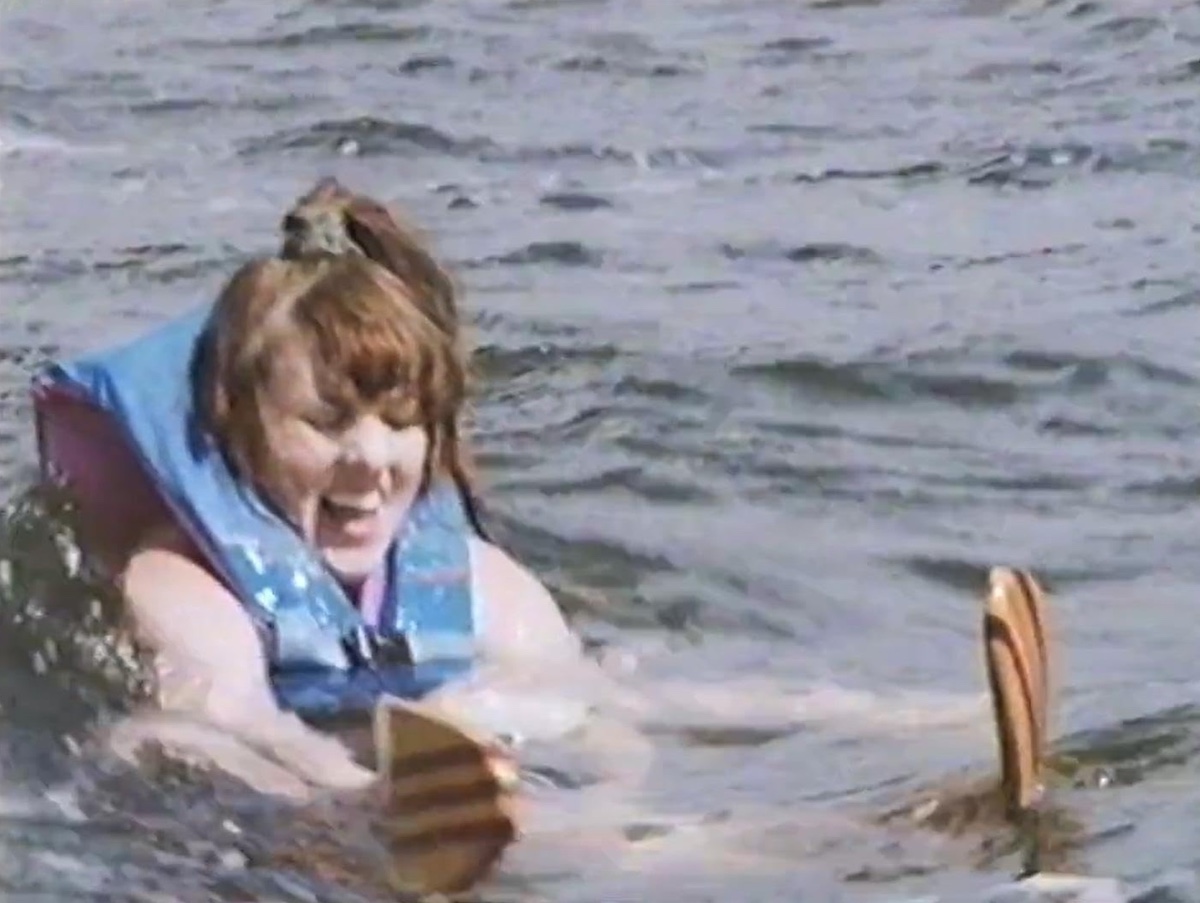

When a group of young friends visit an old lake, things take a turn for the worse…
Seven friends are going on a camping trip by an abandoned lake. Anyone who’s seen a horror film should have an inkling of where this is headed. Let’s play Horror Movie Bingo: Large sign that states ‘No Trespassing’? Check. A lake with a spooky name? Check. Another ‘Beware’ sign that goes unheeded? Bingo!
The foreshadowing is so on-the-nose that it feels like director Mike P. Nelson is catering to those watching their first horror. A dead squirrel by the water disappears after two characters turn around for a split second, yet neither of them appears confused by this occurrence. Not the reaction I’d have if an animal carcass vanished in front of me, but what do I know? When the muscled jock is asked if someone else can drive the boat, he proudly asserts “Over my dead body!” He may as well have winked into the camera lens.
It’s difficult to know whether to blame the writing or the acting for “No Wake”, though neither excels. The build-up is too long and doesn’t do anything to presage the disaster. What’s more, the fact the pals continue filming throughout the climax is totally unbelievable and breaks the aforementioned first rule of the found-footage format: ensure it makes sense for your protagonist to keep filming.
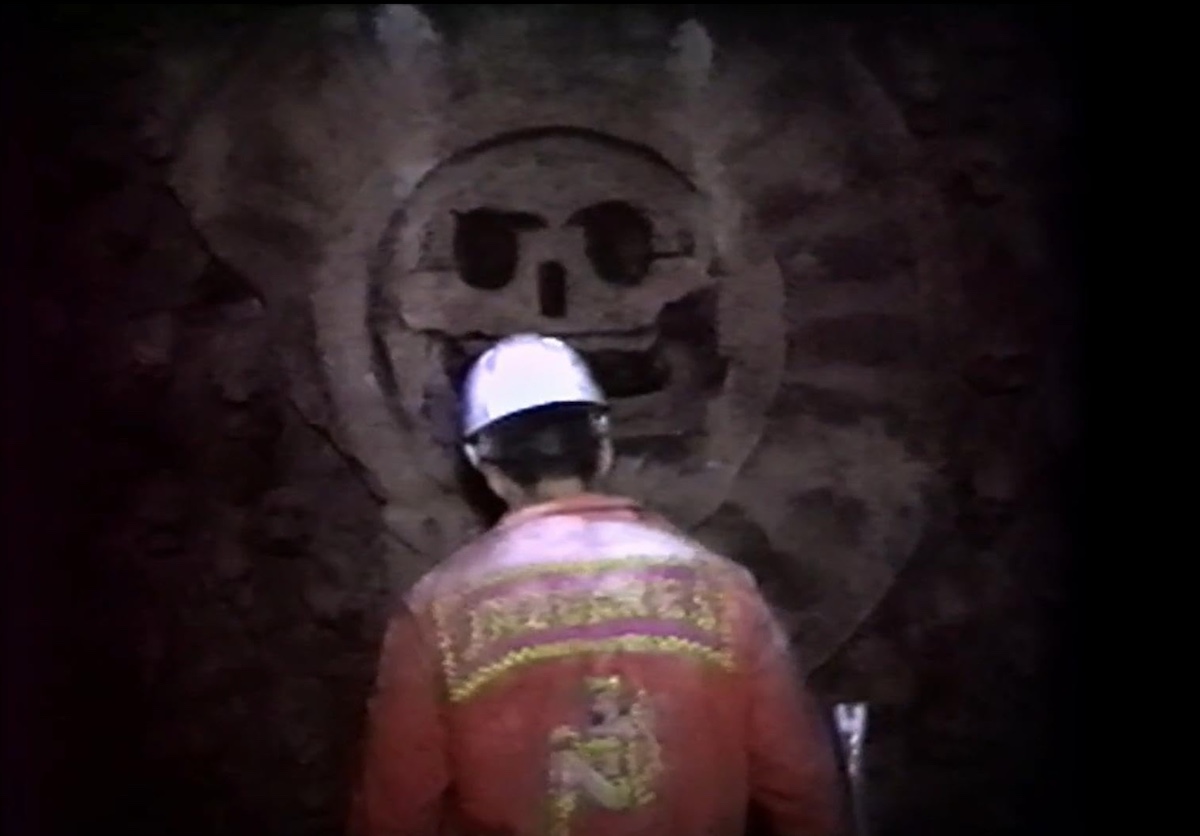

When a cameraman is pulled from the wreckage of an earthquake, he follows his saviours through the rubble… but what they find on the other side is beyond their worst nightmares…
Through jarring cuts, we’re whisked away to the second tale: “God of Death”. With such an exciting title, one expects something truly terrifying if the antagonist is the God of Death! Unfortunately, much like “No Wake”, there’s an excessively long preamble before we get to see the villain or experience anything resembling horror at all.
After an earthquake reduces a news station to rubble, the only person left alive is cameraman Luis (Ari Gallegos). A rescue team is sent inside but they come into more difficulty as the building further collapses around them. Members of the squad demand Luis put down his camera several times as he appears to be holding up their escape, but he refuses for personal reasons. He declares he’s wanted to film heroes (such as his saviours) his whole life, so he won’t miss the opportunity now. Regrettably, all this interaction does is alert audiences to how unrealistic it is that someone would continue to film what transpires! It’s behaviour dictated by the plot.
There’s a lot of screaming in this vignette, but this usually doesn’t equate to horror. It only feels OTT, with some of the scenes becoming so loud and filmed so erratically that it becomes annoying. However, with this being said, some shots work, such as the sequence with the crew racing down the stairs as the ceiling caves in behind them. But again, while technically impressive, it’s not scary. It could be termed a tragic gore-fest, but it only borders on frightening at the end.
This short, perhaps more than any of the others, highlights how the creative team behind this sixth V/H/S really should have had a longer conversation about their vision for the project. The tonal imbalance and absence of thematic cohesion are already present, though they will only be exacerbated in further entries. Much like the walls in the Mexican news station, the cracks are already beginning to show.
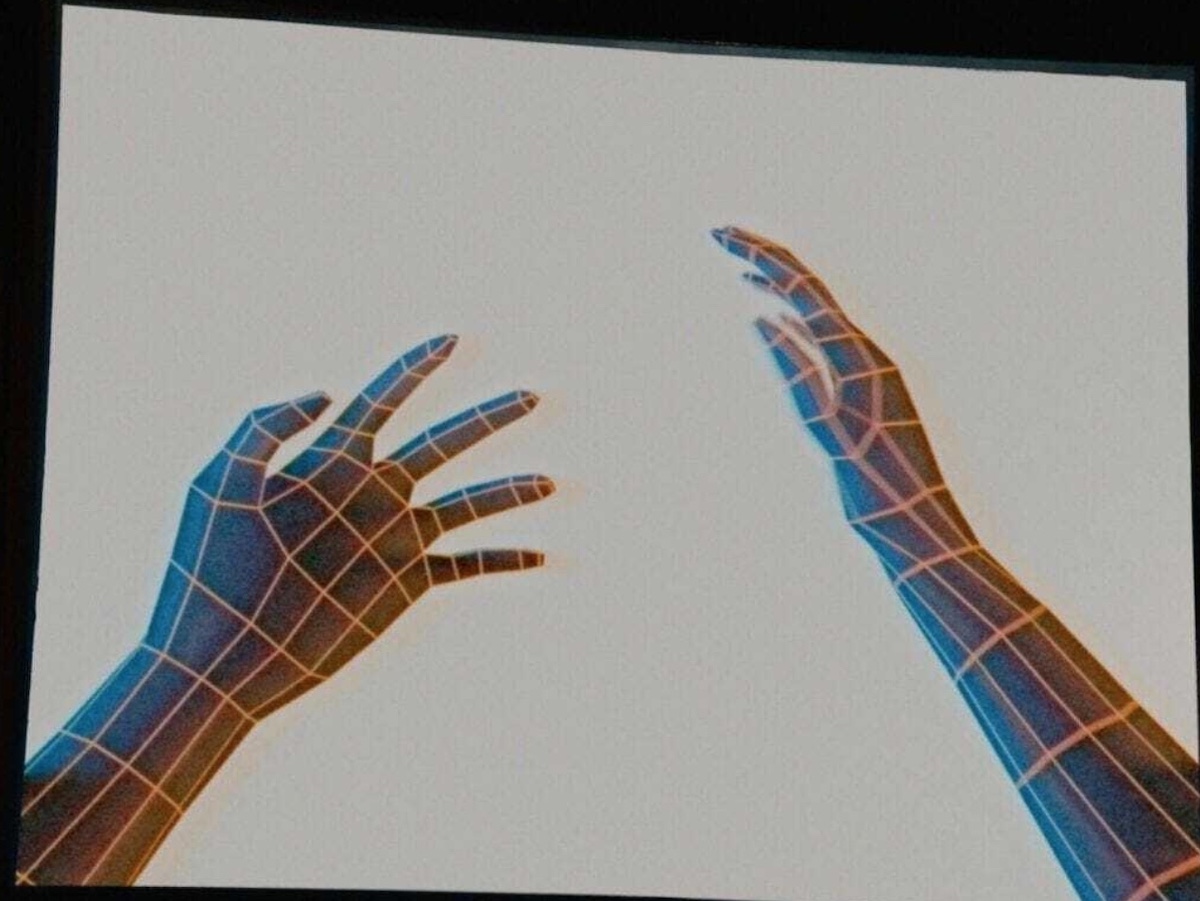

An evening of experimental theatre becomes terrifying after the performer introduces an innovative piece of technology to her routine…
Natasha Kermani’s “TKNOGD” appears to be a return to a more believable premise. Performance artist Ada Lovelace (Chivonne Michelle) stands alone on stage, accusing her audience of killing our Gods and replacing them with technology. Affirming that we’ve allowed a technological deity to usurp the old ones, she plays a video for her audience (which, if you ask me, constitutes lazy performance art).
A man appears on screen and presents us with a piece of new-fangled tech: a snazzy headset and interactive glove, through which he claims he can live in two different planes of existence. He doesn’t expand on this statement, though he does repeat it (almost verbatim) a few more times. The notion of their being two different planes of existence is important for what comes next, so the obvious logical fallacies inherent in the assertion are left unexplored. Needless to say, whenever I’ve played a VR game, I don’t think it amounts to me entering a different dimension or existential plane. But Ada Lovelace does…
The direction feels largely stagnant, probably because story creators Zoe Cooper and Natasha Kermani restricted themselves to a single location with a stationary protagonist. Cuts are made between different VHS recorders that are ostensibly documenting the show, but one can’t help but feel as though Kermani is cheating.
Though the story purports to offer criticisms of our insidious connection with technology, it doesn’t provide any new perspectives on such a time-worn subject. As desperately as this segment wants to appear smart, there’s nothing about it that shocks or amazes. Much like a lot of experimental performance art, the piece ultimately becomes tedious and not as insightful as the creator believes it to be.
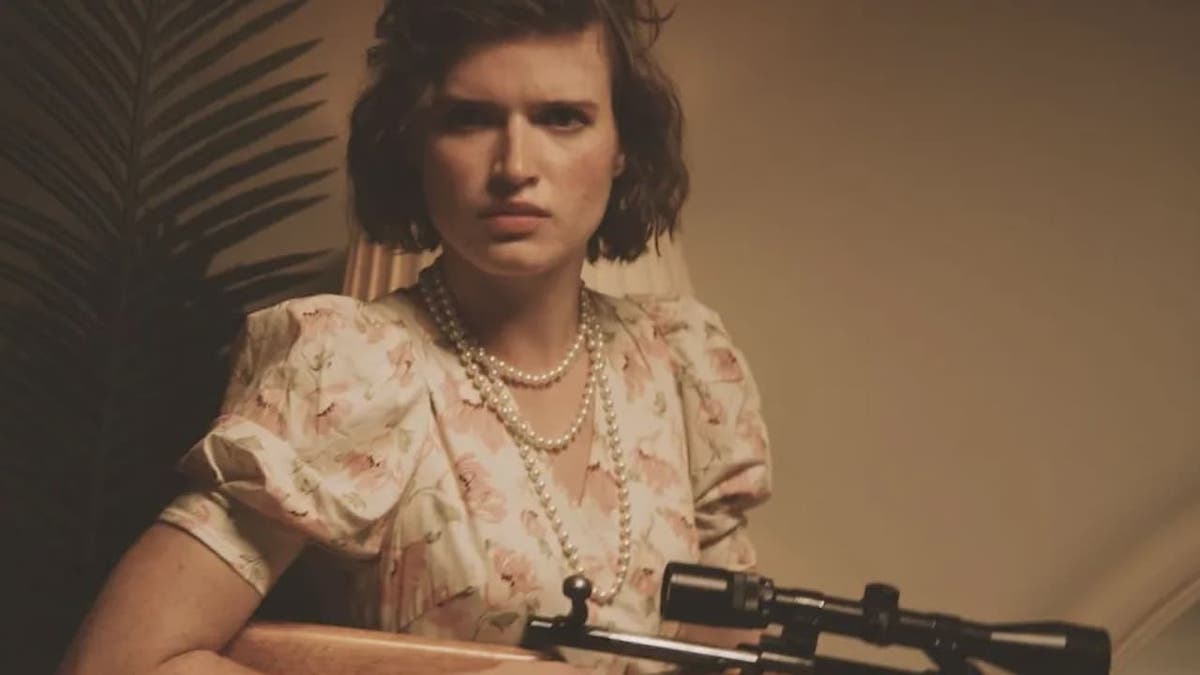

A coming-of-age ritual leads to violence in American suburbia…
I’ve been entirely negative about the entries so far, but “Ambrosia” marked a step in the right direction; a fresh and believable short about a demented family gathering. It takes a moment for us to grasp what’s happening, but then it clicks: our teenage protagonist Ruth (Evie Blair) is a character from the first story.
This psychopath is the latest individual to enact a cultish rite of passage. The Wrigley family are proud of their adept debutante, marvelling at her zeal and panache. Sadly, just as the family reunion feels like it is getting wholesome, some unwanted visitors arrive to spoil the party…
Having directed “No Wake”, Mike P. Nelson redeems himself by turning Ambrosia into an intelligent and frighteningly plausible home movie. The latter attribute is arguably the most important: so far, all these stories have lacked credibility. It’s unclear why the first three entries necessitated a found-footage format, or whether or not it’s believable the events depicted would be filmed the way they were.
However, in Ambrosia, the coarse, granulated footage seems to achieve the aspect of believability that the other stories lack. The filming style, coupled with the deranged family, makes this reminiscent of Thomas Vinterberg’s Festen (1998), only more guns.
The climax even delivers on what we’ve been promised, and Blair’s performance as Ruth is remarkable, as is everyone who makes up the Wrigley family. The slow build-up becomes wholly absorbing: the smart writing and direction ensure there is no lull in suspense or intrigue. With a clever spin on the first segment, it’s created some momentum for the next outing.


When a detective is taunted by videotapes of gory murders before they occur, he discovers the answer to his case may have its roots in the supernatural…
Alas, the momentum of “Ambrosia” is derailed by “Dreamkill”. Scott Derrickson’s macabre directorial style turned the likes of Sinister (2012) into one of the creepiest films of the 2010s, but here he misses the mark—if only slightly.
The story follows Detective Wayne (Freddy Rodríguez), a cop confounded by the fact he was sent a videotape of a murder before it happened. The VCR footage is unnecessarily gruesome: a man binds his victim, cuts her throat with an electric meat carver and lacerates her eyelids with a razor blade. Derrickson shoots this all in a shaky close-up so we don’t miss a thing. When Wayne receives another tape that precedes a similarly grisly homicide of a naked man, he knows something supernatural must be happening…
However, what begins as a slow, cerebral short turns into a sloppy slasher. On top of this, Derrickson abandons any sense of perspective in the finale, leaving us feeling cheated once again. After all, why impose stylistic parameters if you’re just going to abandon them when it’s convenient or too complicated? The second rule has been voided.
It feels as though our writer-director understood he had written himself into a corner: the rushed, nonsensical ending feels out of place in juxtaposition to the otherwise patient direction. An intriguing set-up is squandered by a painfully mediocre finale.


An amorphous entity from another world is discovered, but after it’s brought to a research facility some suspect it has sinister motives…
Finally, we come to franchise mainstay David Bruckner’s entry: “Total Copy”. Clips of this segment are spread throughout V/H/S/85 as brief interludes between each entry, but only now are we given the conclusion of the story.
At Stamer University, a group of scientists study a shapeshifting being referred to as Rory. Found on top of a butte, Rory is provided with examples of human culture to educate him. Dr Spratling, leader of the research team, believes Rory is sentient and trying to communicate, but tensions rise amongst the scientists as some believe certain members are being manipulated by the alien creature…
I would’ve preferred this vignette be shown in its entirety rather than be seeded throughout the film. There’s a wonderful atmosphere akin to John Carpenter’s The Thing (1982), but we’re denied total immersion as we continue to jump back and forth for most of the narrative. When we are finally allowed to watch the remainder of the story, its impact is diminished.
Considering this is possibly the most interesting tale of V/H/S/85, it would’ve benefitted from better execution, but the performances are believable and the premise draws you in. The production design and SFX are also second to none. Creating a keen sense of cosmic horror, its Lovecraftian vibe will also find appreciation.
Earlier, The Blair Witch Project was evoked as arguably the best horror film to employ the found-footage format. What made that seminal film so iconic is how it always felt like the horrifying threat was just off-screen, so its rough cinematography contributed to the story and wasn’t just a stylistic choice for the sake of it.
There was also the pacing of the lead character’s spiral into dread and despair. The cast’s stellar performances convinced audiences they were genuinely watching a documentary where people were killed by a malicious entity in the forest. The clever editing meant we were never left with a dull moment, even when nothing was necessarily happening.
V/H/S/85 lacks many of Blair Witch’s attributes. The majority of the tales suffer from bad pacing, and there’s often too much preamble without a worthwhile payoff. The performances are largely unconvincing, too. This is especially the case with “No Wake”, “God of Death”, and “Dreamkill”, but it’s reasonable to assume the weak scripts didn’t help the actors to create believable characters. No matter how unfathomable some of these situations may be, some of the dialogue truly is head-scratching.
Despite an inordinate amount of graphic violence, as a whole V/H/S/86 is humdrum horror, only compounded by such a long runtime. The lack of a unifying thread between each story means you’re also forced to consider the film as a disjointed piece as opposed to an interconnected narrative exercise. Discrepancies in tone, subject, and style make for a confusingly vague piece of work. While its two most impressive entries are to be praised (“Ambrosia” and “Total Copy”), they can’t make up for what is, in the end, an uninspired entry into the found-footage canon.
But hey, there’s always next year…
USA | 2023 | 110 MINUTES | COLOUR • BLACK & WHITE | ENGLISH

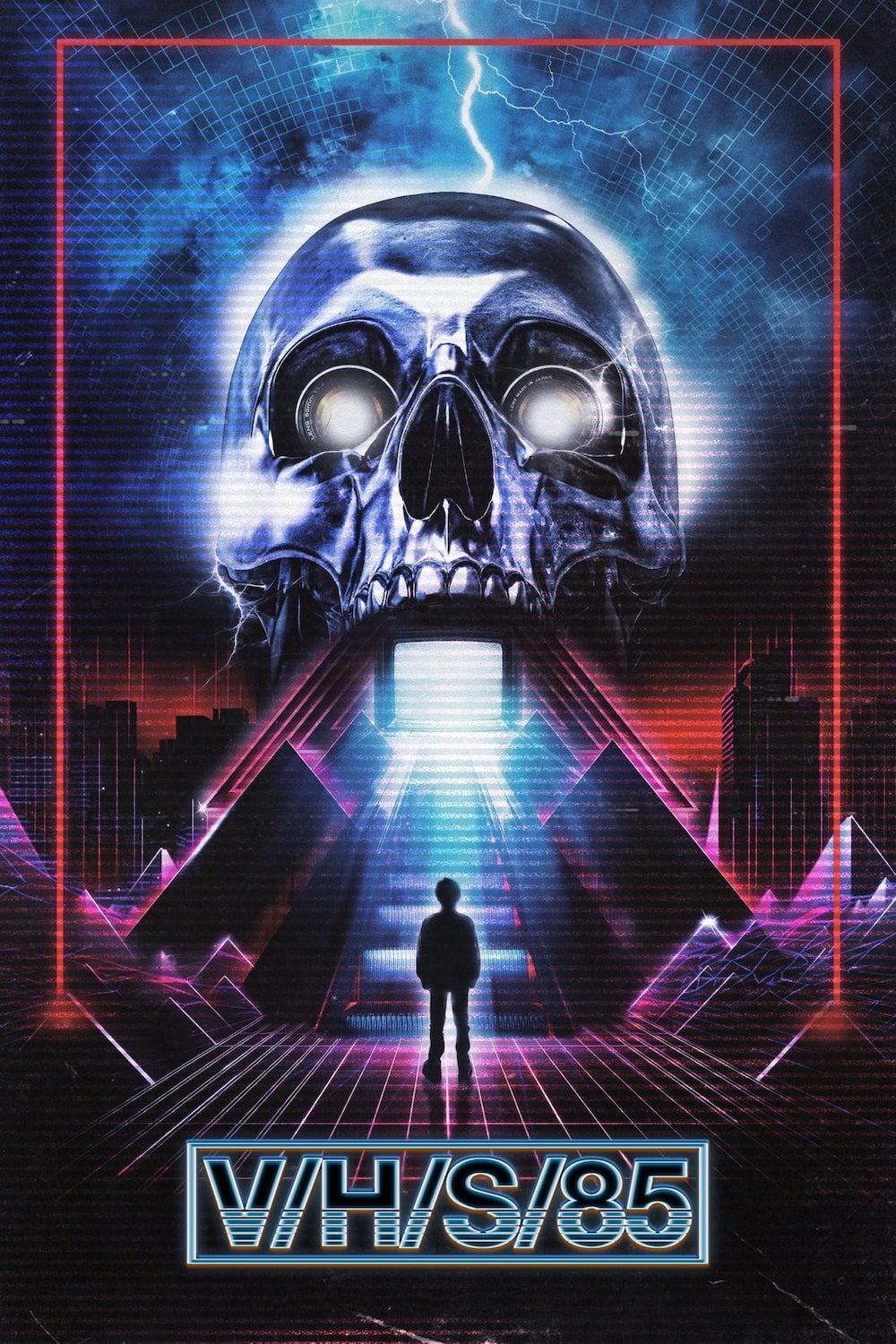
directors: David Bruckner (Total Copy) • Scott Derrickson (Dreamkill) • Natasha Kermani (TKNOGD) • Mike P. Nelson (No Wake) • Gigi Saul Guerrero (God of Death).
writers: C. Robert Cargill, Zoe Cooper, Scott Derrickson, Evan Dickson, Mike P. Nelson & Gigi Saul Guerrero
starring: Freddy Rodriguez, James Ransone, Jordan Belfi, Gigi Saul Guerrero, Chelsey Grant, Alex Galick, Justen Jones, Marcio Moreno, Anna Sundberg, Chivonne Michelle & Tyler Noble.
